Unit 3 Star Birth Nebulae
1/91
There's no tags or description
Looks like no tags are added yet.
Name | Mastery | Learn | Test | Matching | Spaced |
|---|
No study sessions yet.
92 Terms
Interstellar Medium (ISM)
The space between stars in a galaxy
composition: 99% gases (90% H, 10% He, other gases) 1% dust (solids)
1 - (ISM) components with star formation
molecular clouds (molecular H2)
H-II Regions (ionized Hydrogen)
2 - Types of Nebulae: H-11 (H2) Regions (star birth)
Diffuse Nebulae (meaning they do not have well-defined boundaries)
reflection) (light) reflect light off of nearby galaxies
emmission (thick) emit their own light
2 - (Types of Nebulae) Dark Nebulae - BOK GLOBULES
(absoprtion, ly) isolated and small dark nebulae containing dense cosmic dust and gas from which a star formation may take place
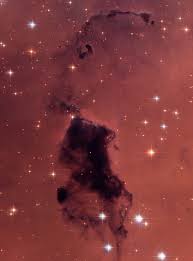
2 - (Types of Nebulae) EGGs
(absorption) (evaporated gaseous globules) dense compact pockets of interstellar gas, within stars may be born
2- (Types of Nebulae) Planetary Nebulae
star death, glowing, expanding, shell of gas and dust that forms when a star dies from the castoff layers
2 - (Types of Nebulae) Supernova remnant
star death, the result of a star exploding in a supernova (creates other elements (big stars)
3 - Nebular Fragmentation
a large, gaseous cloud breaks apart into smaller, denser clumps, that eventually form stars
gravity and presure: stars are born from collpase of a large cloud with many smaller additional collapses or fragmentations during general collapse
Star forming scenarios - 1
Spontaneous Collapse - cloud by circumstance begins gravitational collapse
Star forming scenarios - 2
Forced Collapse - another force causes it (events travelling thorugh space)
4 - Cloudlets
very large clouds (low temp)
the cloud begins to collapse
fragmentation occurs
continue to collapse over and over
until we reach dark nebula (when we make star systems)
dark nebula
also known as an absorption nebula, dense cloud of gas and dust that make them appear dark
5 - Formation of a protostar
protostar has a high luminosity (large), no fusion cause no layers
Herbig-Haro objects (HH Objects)
gets rotational direction
jets are on the scale of AUs (ejecting material)
not circular
6 - T-Tauri Phase/Star
transitional phase, young star, extreme activity
core continues to heat up
(temp increase, brightness increase (luminosity drives off outer cocoon)
becomes circular
then becomes T-Tauri Star (really close to fusion)
7 - Main Sequence Star
pressure in core halts the gravitational collapse of the star
hydrostatic equilibrium: balance between gravity and pressure
core = fusion, layered
most of a stars life
Main Sequence Dwarf Stars
90% of stars
Burn H into He via fusion reactions
small stars: proton-proton chain fusion
large stars: CNO cycle fusion
ex: the sun
smaller mass (0.5-5Mo)
Main. Sequence Massive Stars
top end of the main sequence
blue giants - O and B type stars
stars 5x larger than the sun
massive stars have much shorter life than normal stars
medium to high mass - (5-8Mo)
Main Sequence Super Massive Stars
Walt-Rayett Stars (Hyper Giants)
hot, luminous stars, rapidly losing mass
shortest life spans
Maximum masses of main sequence stars
Mmax = 50-100 solar masses
more massive clouds fragment into smaller pieces during star formation
very massive stars lose mass in strong stellar winds
What dictates the death of a star
its mass
Basic Stellar Properties
stars burn via fusion (nucleosynthesis)
apparent magnitude
how bright a star appears from Earth
lower magnitude = brighter star
absolute magnitude
how bright a star would be if all the stars were placed exactly 10 parsecs from earth
same thing as luminosity?
luminosity
actual brightness of a star
depends only on size and temperature
How elements H and He were formed by the universe
made in the big bang
biggest element made in a star
Fe (IRON)
biggest natural occurring element in a star
uranium
nucleosynthesis is
the process of element (nuclei) formation
Three types of nuclei formation
big bang nucleosynthesis - red (H→He)
stellar nucleosynthesis (H→Fe)
Supernova nucleosynthesis (Fe→U)
relative abundance of elements in our universe / atomic number
Fusion: Hydrogen
Core Temp: 13mil K
Fusion: Helium
Core Temp: 100mil K
Fusion: Carbon
Core Temp: 500mil K
Fusion: Neon
Core Temp: 1.2bil K
Fusion: Oxygen
Core Temp: 1.5bil K
Fusion: Silicon
Core Temp: 3bil K
Brown Dwarf Stars
almost a star
mass and temperature is too small to allow fusion reactions to occur (no luminosity)
70-80 times larger than jupiter
mass up to 0.08 Mo
most common stars
M Dwarf Stars
Least common stars
B stars (massive)
Luminosity Classes
1a Bright Supergiants
1b Supergiants
II brightgiants
III giants
IV subgiants
V main sequence stars
1a
bright supergiants
1b
supergiants
II
bright giants
IV
subgiants
V main sequence
G2V
G=yellow (color/temp), 2=scale of color (to next color), V=main sequence star (brightness)
Census of the stars
faint red dwarfs are most common
bright, hot, blue, main sequence are very rare
giants and supergiants are extremely rare
Star Death - Main Seq Dwarf Star
hydrogen fuel is used up, helium is building up in the core
gravity pushes in
core becomes unbalanced and begins to collapse
temperature increase
helium begins to fuse
it expands, then becomes a red giant
Star Death: Lower Mass Stars to Red Giant
cool temp drops, bigger, brighter
Star Death: Lower Mass Stars - Red Giant to Planetary Nebulae
fusion of Helium
core shrinks
outer layers are thrown off
death nebula
white dwarf in center
Star Death: Lower Mass Stars - Planetary Nebulae to White Dwarf
dense, small balls of carbon
very hot
cools very slowly
Star Death: Lower Mass Stars - White Dwarf to Black Dwarfs
impossible to see, remains of dead white dwarf
Star Death: Large Mass Stars - Supergiants
largest and most luminous, burned up Hydrogen and is burning helium now, then become red supergiants
Star Death: Large Mass Stars - Supergiants to Red Supergiants
helium fusing
temp increase
it expands
super red giant, it cools
gravity contracts core, begins burning carbon
fusing oxygen, neon, nickel
and silicon
expansion and contraction, core elements keep fusing until they reach iron
Ex: polaris
Star Death: Large Mass Stars - Red Supergiants to Cepheid Variable Stars
yellow supergiant stars
brightness varies
used to determine distance to nearby galaxies
Star Death: Very Massive Stars - Supernova
very massive stars
core collapses
rapidly reboounds
core explodes, major shockwave
Final stage for massive stars from supernova
(neutron star or black hole)
stars less than 8 solar masses become dwarf stars
stars 8 solar masses and above become neutron stars or black holes
Neutron Stars
massive star
extreme density
extremely small
spin: pulsar (emit energy pulse)
dont do fusion, tiniest stars
Black Hole
inversions of matter
so dense light cannot escape it
time is related to gravity
die by evaporation
schwartzschild BH (non rotating) perfect circles
Kerr. BH: rotates fast
ergosphere: static limit, objects move at speed of light
Open Star Cluster
contain < 1000 stars
loosley gravitationally bound together
younger than globular
more enriched in heavy elements (population 1 stars)
massive
OBA
2nd generation
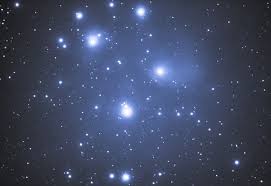
moving groups
gravitationally unbound stellar associations
Globular clusters
contains millions of stars
extremely old by billions of years
population II: low in heavy elements
H He
1st generation
the sonner a cluster turns off the HR diagram the older it is
less = open cluster
more supergiants = open cluster
more white dwarfs = globular cluster
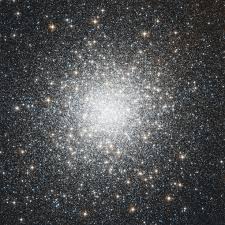
Galaxies
huge groups of single stars, star systems, star clusters, dust, and gas bound together by gravity
Elliptical Galaxies
20% of mapped galaxies
look like flattened balls
billions of stars
little gas and dust
E galaxies
compact
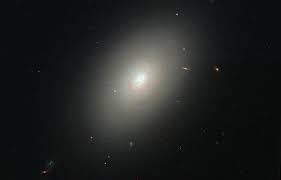
E0
more circular
E7
more disc like
Lenticular Galaxies
disc galaxies, very thin
lost interstellar matter
little ongoing star formation
aging stars
produce least amount of stars
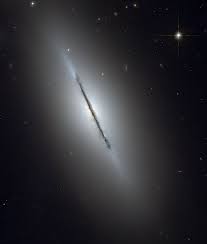
stars form in
outer arms of galaxy
spiral galaxies
twin spirals
77% of galaxies
pinwheel shape
young stars, bright stars, has and dust may be in the arms
more budlge than disc: A
more disc than budlge: C
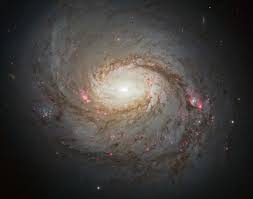
Disks
flattened systems that rotate
circular rotating disk axis
ongoing star formation
gas and dust (10-50%)
ages of stars vary
spiral arms form sustained density waves
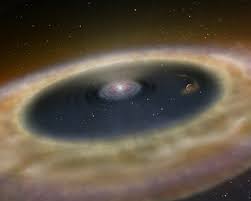
Buldges
spheroid systems (no/little rotation)
stars are randomly oriented
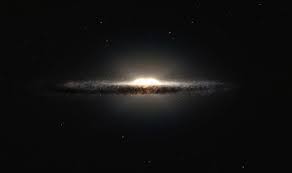
irregular galaxies
no regular shapes
missing budlge
3% of mapped stars
concentration of billion stars
no rotation
not enough material to put them together
smaller
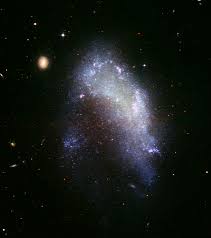
Active Galactic Nuclei (buldge)
AGNS’s are enormously bright, distant, galaxies with giant black holes at their center
really bright
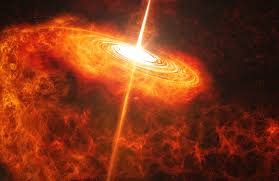
Seyfert Galaxies (AGN)
normal spiral galaxies, bright nucleus that outshines the rest of the galaxy, active galaxies
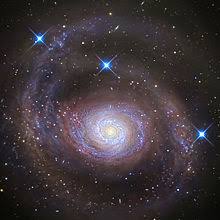
Blazars (AGN)
very bright point like a nucleus, a jet of material emanates
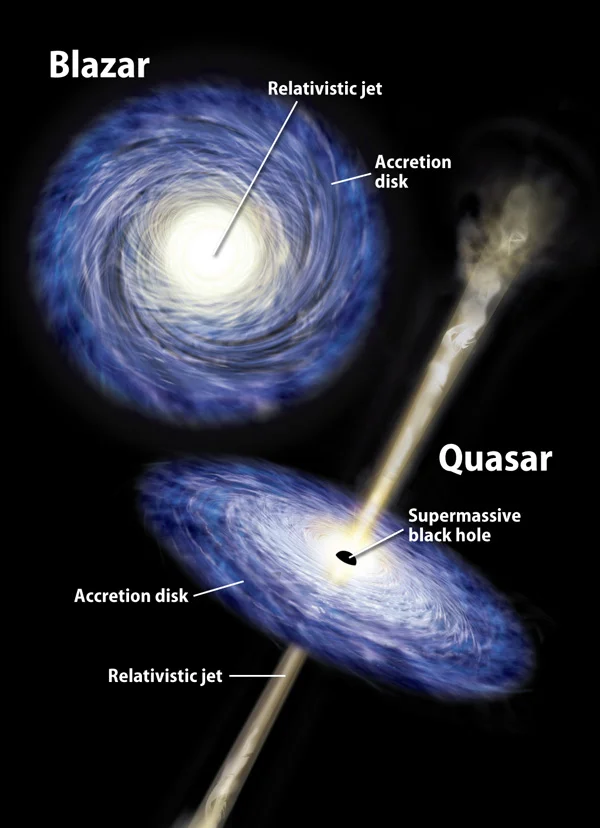
Quasars (AGN)
less bright, producing enormous amounts of energy
lens end quasar: einstein cross, four of the same picture
used as markers for the age of Uni, give off more energy than the entire galaxy
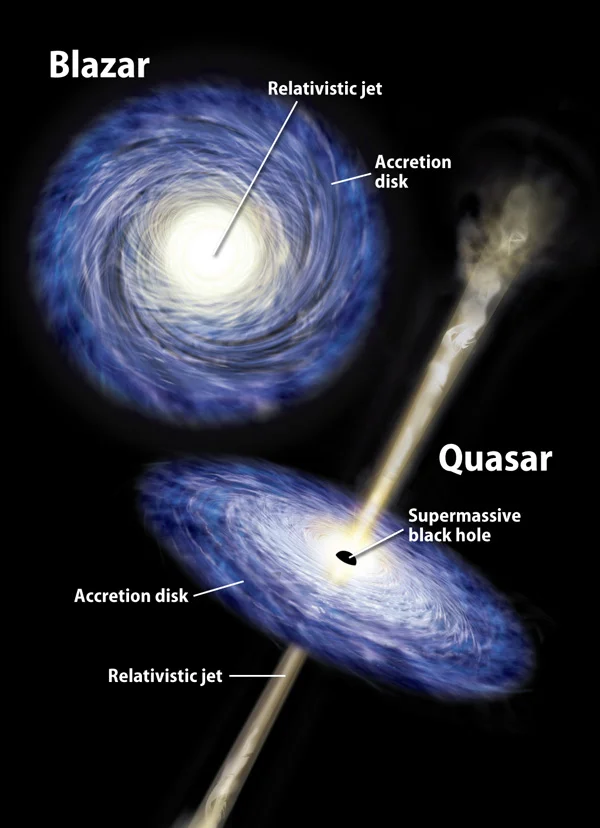
galaxies are grouped in
clusters
Age of the Universe
13.8 billion years old
know this beacuse of quasars and red shift
milky way is
10.8 billion years old, know this because of globular clusters
Cosmology
the study of the origin, structure, and evolution of the universe
Universe is made up of
73% dark energy
23% dark matter
4% ordinary matter
the cosmological principle
the universe is a machine that follows the same laws
dominant form of mass
dark matter
The Big Bang
the formation of the universe, pure energy existed by itself
reverse enginerring
gave us 4 fundamental forces
photons
fundamental particles and nucleosynthesis
4 fundamental forces (1)
electromagnetic force
wavelength, light, radiation
exchange of photo energy
most important force that holds everything together on a subatomic level
4 fundamental forces (2)
gravitation (mass)
(4 fundamental forces) (3) nuclear force
strong nuclear force
holds photons and neutrons quarks together in the nucleus
weak nuclear force
allows for fusion to create heavier elements
(4 fundamental forces) (4) Fundamental particles: Photons
particles of light energy
(4 fundamental forces) Fundamental Particles: protons and neutrons
make up the nucleus
composed of quarks
(4 fundamental forces) fundamental particles: electrons
negative particles
nucleosynthesis
process of creating larger elemnts from smaller ones
Evidence for Big Bang
cosmic background radiation, radiation left over from the explosion
bok globules
isolated and SMALL dark nebulae, dense cosmic dust